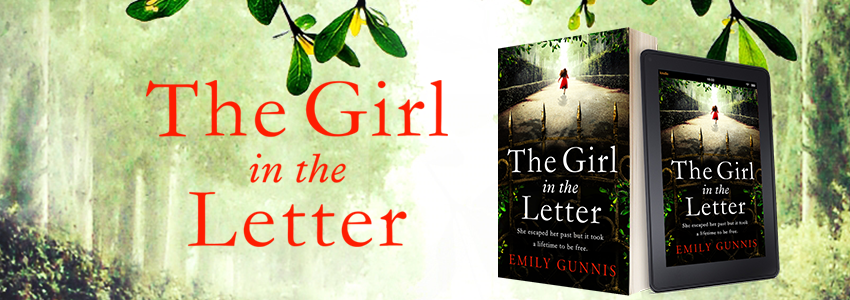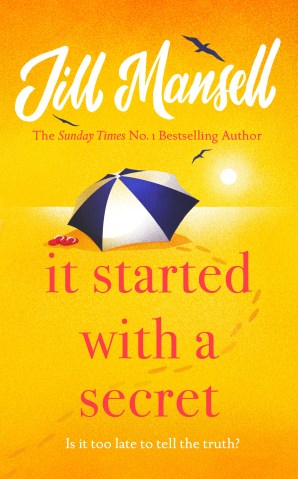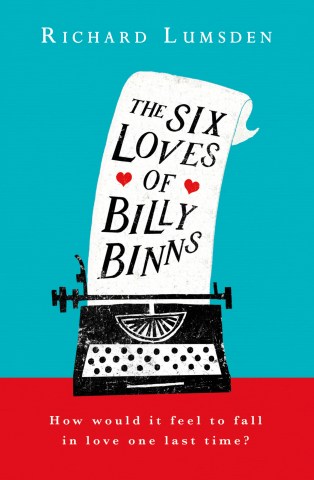The Girl in the Letter by Emily Gunnis | Friends of Bookends Reviews

A heartbreaking letter. A girl locked away. A mystery to be solved.
1956. When Ivy Jenkins falls pregnant she is sent in disgrace to St Margaret’s, a dark, brooding house for unmarried mothers. Her baby is adopted against her will. Ivy will never leave.
Present day. Samantha Harper is a journalist desperate for a break. When she stumbles on a letter from the past, the contents shock and move her. The letter is from a young mother, begging to be rescued from St Margaret’s. Before it is too late.
Sam is pulled into the tragic story and discovers a spate of unexplained deaths surrounding the woman and her child. With St Margaret’s set for demolition, Sam has only hours to piece together a sixty-year-old mystery before the truth, which lies disturbingly close to home, is lost for ever…
Read her letter. Remember her story…
Here is what our Friends of Bookends panel thought of The Girl in the Letter by Emily Gunnis…
Angie
Who Is ‘The Girl In The Letter’?
This book took me completely by surprise. This is not my usual type of reading, I am drawn to chick-lit, romance, happy-ever-after type books which this is most definitely not. However, from the moment I picked it up and started, I found it hard to put down again.
The story begins in the past, a young girl Ivy, in a mother and baby home run by nuns commits suicide but not before getting an escape route to another one of the girls, a young eight year old by the name of Elvira.
Years later, a young journalist called Sam, a single mother living with her grandmother, finds a letter in her grandfather’s old papers and is drawn to ‘the girl in the letter’, the mystery of who she was, who she was trying to contact and why no-one would talk about the home where the girl once lived.
There are many characters involved in this book but all are interlinked, although I felt Sam’s ex was surplus to requirements, their squabbles didn’t really add anything to the story-line so could have been eliminated.The story-line was carefully drawn out in a way that made you want to keep going, it was never laboured nor rushed, just the right amount of suspense to ensure the pages kept turning.
However, the twist at the end took me by surprise and I was so reluctant to put this down, I stayed up late just to finish it.
“A stunning debut novel from this author and I will eagerly await her next book.”
Francine

The Girl in the Letter deals with a harrowing and shocking account of unmarried girls in the 50s. Based in true life events the novel switches between past and present, whilst also switching narratives. For me, this caused a great deal of confusion. I couldn’t recall who knew who and who was related to whom. This was a debut novel from the daughter of the well known late Penny Vincenzi, and I think, unfortunately, it showed.
The pace of the chapters and the subject matter had me returning to the book whenever I had chance and Emily Gunnis obviously had done her research. The cruelty of the nuns and doctors, of the hold they had over the girls, beggars belief. However, I thought it had a number of issues that jarred and tested the credibility of the read.
Without giving any spoilers, I thought the mistaking of identities was a stretch, the so called natural/accidental deaths when recounted, were questionable.
There were interesting strands to this story but for me to have fully engaged it needed me to like the characters. Whilst naturally having sympathy for Ivy, Sam provoked annoyance, even dislike. She wanted to find the truth, but she seemed ruthless in the pursuit. Using the worker at the derelict site, Nana (who was portrayed as an ancient woman in her sixties which I took exception to, being in that category myself), and especially Fred who she knew had a soft spot for her.
I didn’t see the point of Kitty having the footballer as a boyfriend and Fred’s climbing experience coming in handy did seem too convenient and far fetched as a rescue. In the end Fred saved the day though Sam took the credit. The events of story were worthy to be told, but the mystery elements were a let done. A worthwhile read, buy not without it’s faults.
Angela
International Women’s Day had just passed when I began to read The Girl in the Letter... It was a crashing reminder of the inequality of life just two or three generations ago. The Girl in the Letter tells a fictional story based on the very real and very cruel experience of unmarried mothers in the 1950s. These ‘fallen’ and ‘shamed’ women are abandoned by their families to the horror’s of Saint Margaret’s, while the men – equal partners in this ‘shame’ carry on with their lives unscathed.
The reader is pulled behind the locked gates and doors of St Margaret’s via letters found by journalist Sam, who becomes intrigued by the story of Ivy and Elvira: The Girl in the Letter. There are many layers to this story, both modern-day and from years past.
“I found myself truly absorbed by this story of cruelty, made more poignant by the knowledge that places like St Margaret’s truly existed.”
I found that the book had a relatively slow start and I was eager to know more about Ivy and Elvira, to the point where I became irritated by Sam’s modern-day story. Author Emily Gunnis cleverly drops clues and scraps of information throughout the novel, implying that the past and present may be linked. Personally, I didn’t enjoy this aspect as I prefer not to speculate as I read. However, I am aware that I am probably in a minority and therefore I think most readers will really enjoy the speculation as the story races to a heart-stopping conclusion. It’s hard to say that you ‘enjoy’ a book with this kind of content, but I was thoroughly immersed in the story and invested in the characters. Harrowing, thought-provoking, and highly recommended.
Linda
I was fortunate to read The Girl in the Letter in one sitting on a long haul flight because it’s such an interesting and compelling narrative and deserves concentrated and complete attention.
The Girl in the Letter is a magnificent story, filled with pain, genuine cruelty and a scarily plausible setting of St Margaret’s home for unmarried mothers. So well researched, many of the events are terrifyingly shocking.
The Girl in the Letter was not quite what I was expecting. I had anticipated an emotional and touching story, but I hadn’t reckoned on quite such a roller coaster read of exciting plot, enmeshed narrative strands and fast paced story telling. I was completely captivated from start to finish.

I loved the skilful characterisation. Emily Gunnis understands the complexity of personality and identity and how humans crave live and recognition.
The setting of St Margaret’s, and indeed, the competitive and pressured newsroom in which Sam works, both have a wonderful level of authenticity so that it easy easy to picture the scenes in my mind.
What I found so fascinating about the characterisation in The Girl in the Letter was that although Sam is the conduit through whom all the action is brought together, I didn’t find her as fascinating as the other characters. I think this is because even the most secondary people in the story are plausible and scarily familiar from scandals in recent history. I can imagine The Girl in the Letter might make uncomfortable reading for some!
I loved The Girl in the Letter. Emily Gunnis transported me to another time and place so utterly brilliantly that I won’t forget this book for a very long time.
Tim
I really enjoyed this debut novel, although I thought at times it rambled too much, I felt Ivy’s letters were too long. Sam and Kitty are the leading characters although the staff and associates of St Margaret’s home were a constant brooding and menacing presence that you could never get away from.
The horrors of the mother and baby home were painful to read, but so well written and regrettably believable and are at the very centre of the story as we relive the lives and deaths of the twins and Ivy learning at the same time about a host of other bit part players, I particularly liked Fred, Sam’s love struck colleague. There’s scope for a follow-up featuring these two.
The real sadness of the book are the countless mothers and babies abused or worse in the name of the Catholic church in places like St Margaret’s.






